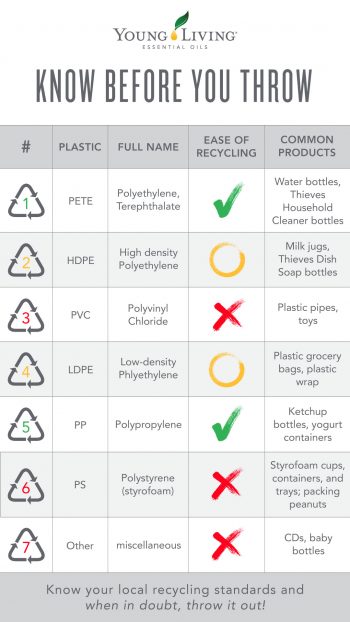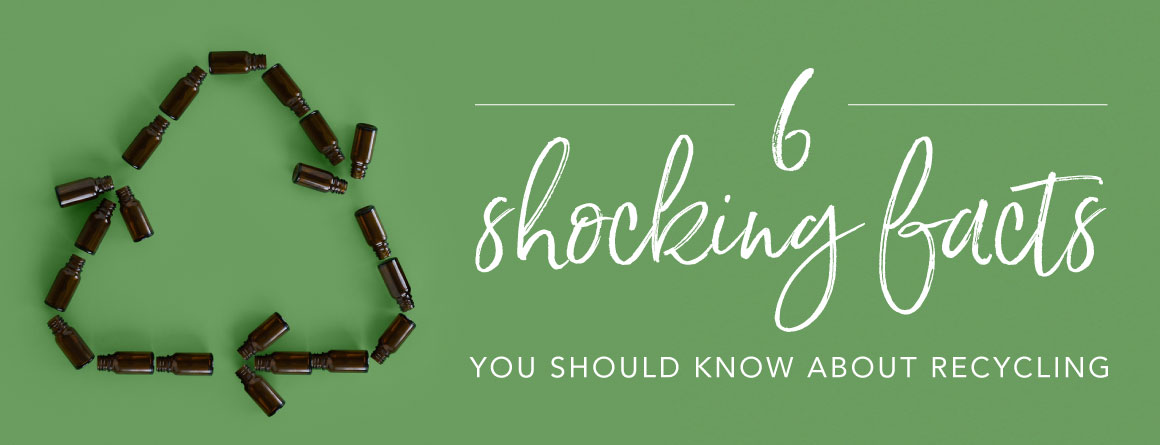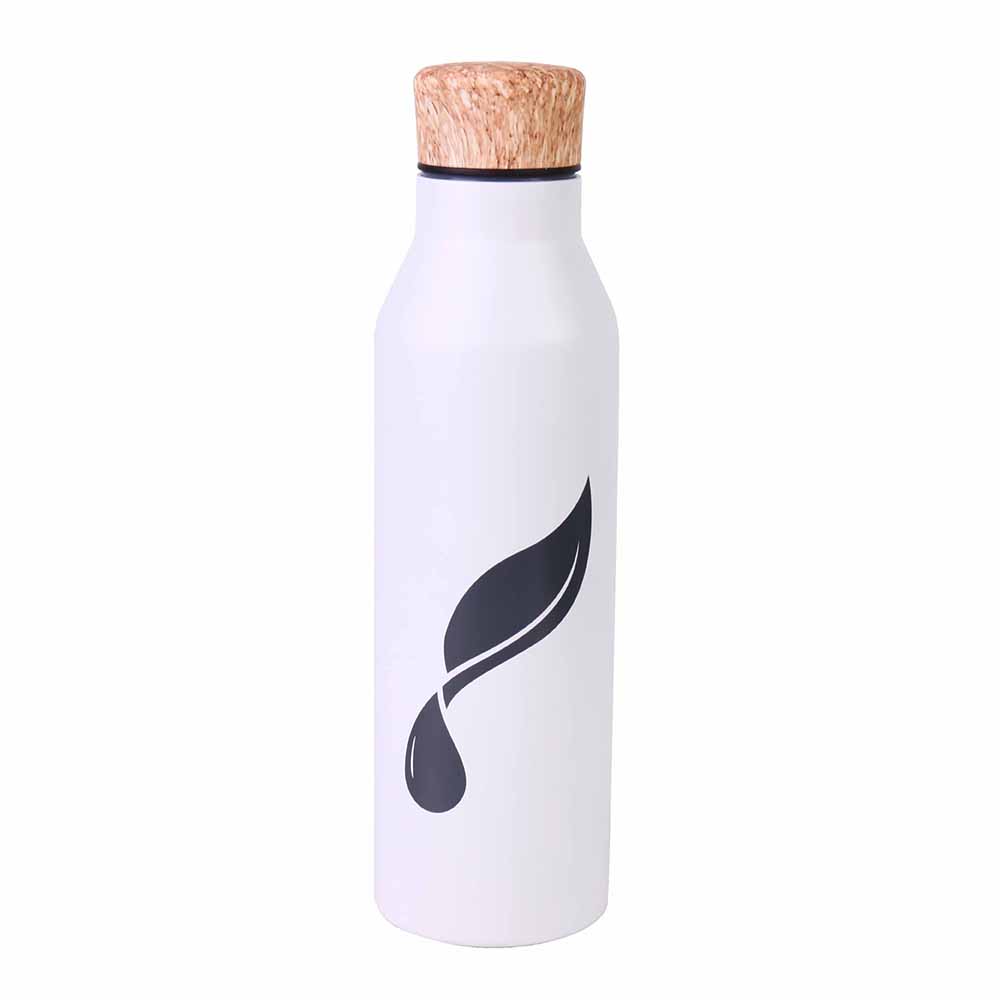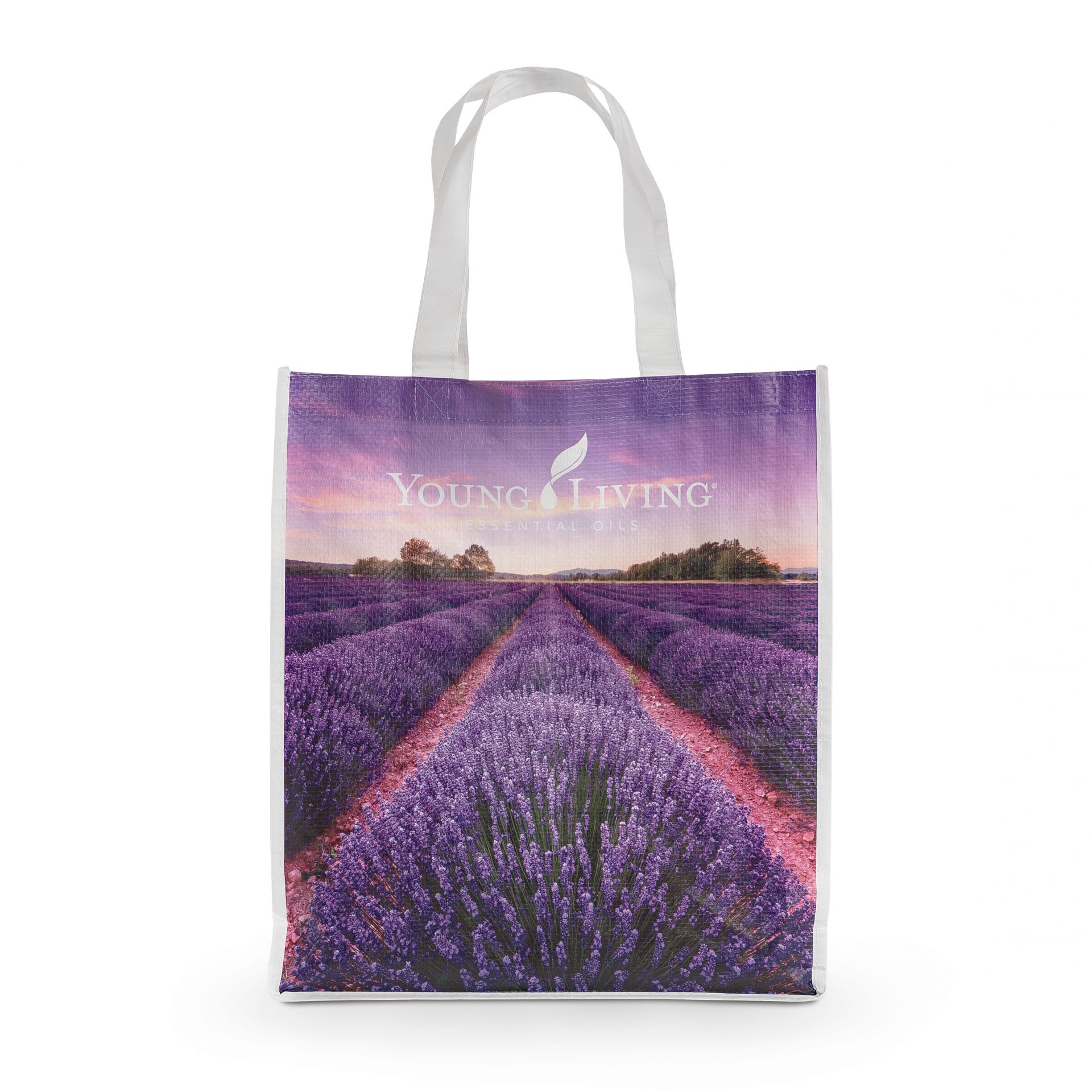Your soda cans are crushed, your water bottles are reusable, and your bank statements are paperless. You’ve even found dozens of creative ways to reuse empty essential oil bottles. You deserve the highest of fives for zeroing in on ways to help us achieve our 5×5 Pledge goal of zero waste in five years!
As stewards of the earth, it’s our duty to responsibly and sustainably manage our impact. The three Rs—reduce, reuse, recycle—continue to be a hot topic, but how much do you really know about this trio? Here are a few facts that might surprise you.
Why is recycling important anyway?
Throwing plastic water bottles in the recycling bin feels way better than tossing them in the garbage can, but there’s so much more we should do. As the world’s population grows, waste grows with it. The average person living in western Europe or North America consumes 220 pounds of plastic every year.
Let’s put that into perspective with a little math:
- 1 pound of plastic = approximately 50 empty water bottles
- 220 pounds of plastic × 50 water bottles per pound = 1,100 bottles
Want to drink real smart water? Use a reusable water bottle.
Plastic is a real problem, but recycling goes beyond bottles and BPA-free containers. Recycling conserves water and energy when compared to manufacturing new materials—as much as a 95 percent reduction of water use for some materials! Recycling also preserves resources and reduces landfills, protecting our current communities as well as future generations.
What you can do
- Join Young Living. Help us reach our 5×5 Pledge goal of five years to zero waste.
- Start with baby steps. Small changes every day add up to a big difference. You can make a difference no matter the size of your efforts—or your recycling containers.
- Discover new ways to help. Read this entire post for a world of tips and tricks.
- Keep it real. Perfection is nice but not necessary. Do what you can when you can.
“We don’t need a handful of people doing zero waste perfectly. We need millions of people doing it imperfectly.” —Anne-Marie Bonneau
Recycling standards aren’t universal
Recycling standards are as varied as the types of plastic found floating in the ocean. Standards in Washington might be drastically different than those in Wisconsin. Even crazier, standards often differ between cities and counties. What works for recycling enthusiasts in San Diego may not work for Sacramento’s upcycling citizens.
Take time to sort through your local recycling standards. Who knows? You may unearth something new to recycle!
What you can do
While standards may vary, there are a few solid dos and don’ts when it comes to what you can recycle.
DO recycle these
The following are items that are nearly universally recyclable. Unless your city, state, or county has specified otherwise, ALWAYS recycle these items:
empty metal food and drink cans
empty plastic bottles and jugs
clean office paper and newspaper
clean and flattened cardboard
DON’T recycle these
Unless your waste management provider specifically tells you otherwise, NEVER recycle these items:
PLASTIC BAGS
plastic wrap
plastic utensils
PLASTIC BAGS
dishware
straws
food or food-related paper
paper cups
plastic utensils
Styrofoam
PLASTIC BAGS
paper tissue
clothing
wood
tubes
furniture
batteries
PLASTIC BAGS
wires
electronics
garden hoses
prescription bottles
needles
PLASTIC BAGS*
*We’re serious. Plastic bags are hands-down the biggest recycling offenders. You’ll soon learn why.
DO think twice
Aspirational recycling—putting things in the bin you think might be recyclable—causes all kinds of problems for recycling facilities. If you aren’t 110 percent positive it can go in the bin, follow this simple rule:
When in doubt, throw it out!
Contamination causes havoc
No, we’re not talking about a zombie-inducing virus, but we are talking about something that can have just as devastating an effect. Recycling contamination is when non-recyclable materials are mixed in with recyclable materials.
For example, when plastic bags get thrown in with true recyclables, it causes workers a huge amount of extra removal work and can clog machines. Also high on the list? Food waste. Anything saturated with food or grease is not recyclable. Pizza boxes with grease spots? Nope. Paper plates from your barbecue? Nope. Newspaper soaked by the rain? Believe it or not, wet paper can’t be recycled.
What you can do:
- Remember the rule “when in doubt, throw it out!”
- Follow our DO and DON’T lists when deciding what to toss in your curbside recycling container.
- Learn the specific recycling standards for your city and create a cheat sheet to place above your recycling bins.
Plastic bags are the #1 contaminant in recycling facilities
We’re seriously serious about this issue. Plastic bags of any kind are not suitable for recycling. This includes garbage can liners, grocery bags, produce bags, sandwich and storage bags, potato chip bags, cellophane, and bubble wrap. These recycling rapscallions clog up machinery and wreak havoc on facilities.
Fortunately, special facilities exist to save the day—and our earth. Look for plastic bag collection bins in grocery stores and your favorite retail stores.
What you can do:
- Use plastic bags sparingly.
- Dump recyclables directly in bins and not in plastic bags or liners.
- Refuse single-use plastics of any kind whenever possible.
- Invest in a few reusable tote bags—we heart these YL shopping totes! Keep them in your car and use them whenever you head to the store, farmers market, or library.
- Drop off plastic bags at a local collection bin.
Glass is infinitely recyclable, but bypass the bin
Glass can be recycled and remanufactured again and again without wearing out. Manufacturing glass from recycled materials cuts water pollution in half compared to making it new. If you opt to trash it, that bottle will last longer than a bad infomercial. We’re talking 1 million years before it starts decomposing.
Unfortunately, many locations don’t accept glass curbside. But no need to curb your enthusiasm for this recyclable! Simply search for locations in your community that accept glass donations and deposit your bottles before dropping off your plastic bags.
What you can do:
- Recycle your essential oil bottles, NingXia Red® bottles, jam jars, and condiment containers.
- Find out where you can recycle glass in your community; Utah locals can bring glass bottles—free from food and liquids—to Young Living Global Headquarters (GHQ).
- Reuse your essential oil bottles.
- Donate glass dinnerware or drinking glasses—these can’t be recycled.
Plastic—it’s complicated
Did you know it takes only five 16.9-ounce water bottles to create enough fiber for one ski jacket or one square foot of carpet? Americans throw away 2.5 million plastic bottles every single hour. Think of how much carpet we could produce if we recycled all those bottles.
Disposable water bottles are only part of the problem. You’ll currently find 5.25 trillion pieces of plastic in our oceans. While swimming with dolphins is a top bucket-list item, swimming with sporks is definitely not.
Remember the “i before e, except after c” thing—one rule with a ton of exceptions? That’s kind of like recycling plastic, but in this case, following the rules saves the planet. Almost any sturdy, hard plastic is recyclable—things like Thieves® Fruit & Veggie Soak, Seedlings® Baby Wash & Shampoo, and Super B™.
What you can do:
- Break up with single-use plastics. Bring your own cup for your morning beverage, keep a fork or spoon at work, and carry a stainless steel water bottle.
- Know before you throw. Check the number in the center of the recycling symbol on the packaging and compare it to your local recycling standards. Some places accept number 1-7; others are more limited. The recycling hauler at Young Living’s GHQ accepts 1-7; 1, 2, and 5 are recycled; 3, 4, and 6-7 are shredded and burnt for energy using a clean process.
- Go for the sure thing. Look at our cheat sheet below to see what numbers you can always recycle.

Ready to ramp up your recycling efforts? Check out the website for the Environmental Protection Agency, where you can learn about difficult-to-recycle items and get up to date info about the war on waste.
The health of our homes and families is as important as the health of our planet. Learn how to make the switch to a toxin-free household and the ingredients you’ll never find in our products.








Leave A Comment